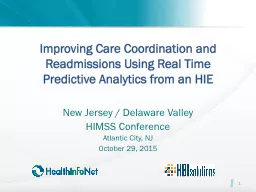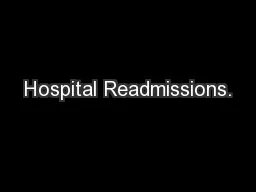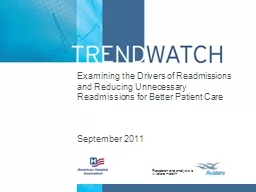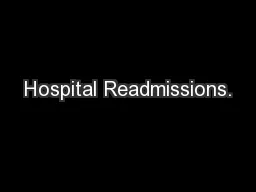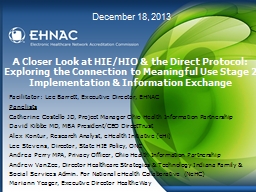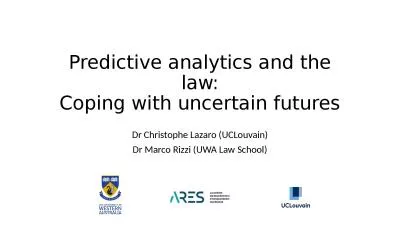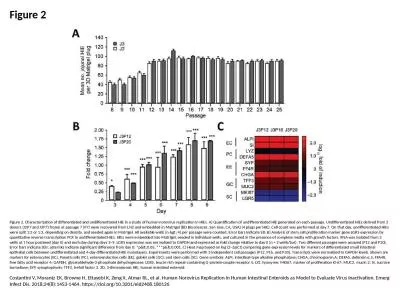PPT-Improving Care Coordination and Readmissions Using Real Time Predictive Analytics from
Author : giovanna-bartolotta | Published Date : 2018-02-27
New Jersey Delaware Valley HIMSS Conference Atlantic City NJ October 29 2015 1 Speakers Dev Culver Executive Director HealthInfoNet Eric Widen CEO HBI Solutions
Presentation Embed Code
Download Presentation
Download Presentation The PPT/PDF document "Improving Care Coordination and Readmiss..." is the property of its rightful owner. Permission is granted to download and print the materials on this website for personal, non-commercial use only, and to display it on your personal computer provided you do not modify the materials and that you retain all copyright notices contained in the materials. By downloading content from our website, you accept the terms of this agreement.
Improving Care Coordination and Readmissions Using Real Time Predictive Analytics from: Transcript
Download Rules Of Document
"Improving Care Coordination and Readmissions Using Real Time Predictive Analytics from"The content belongs to its owner. You may download and print it for personal use, without modification, and keep all copyright notices. By downloading, you agree to these terms.
Related Documents

